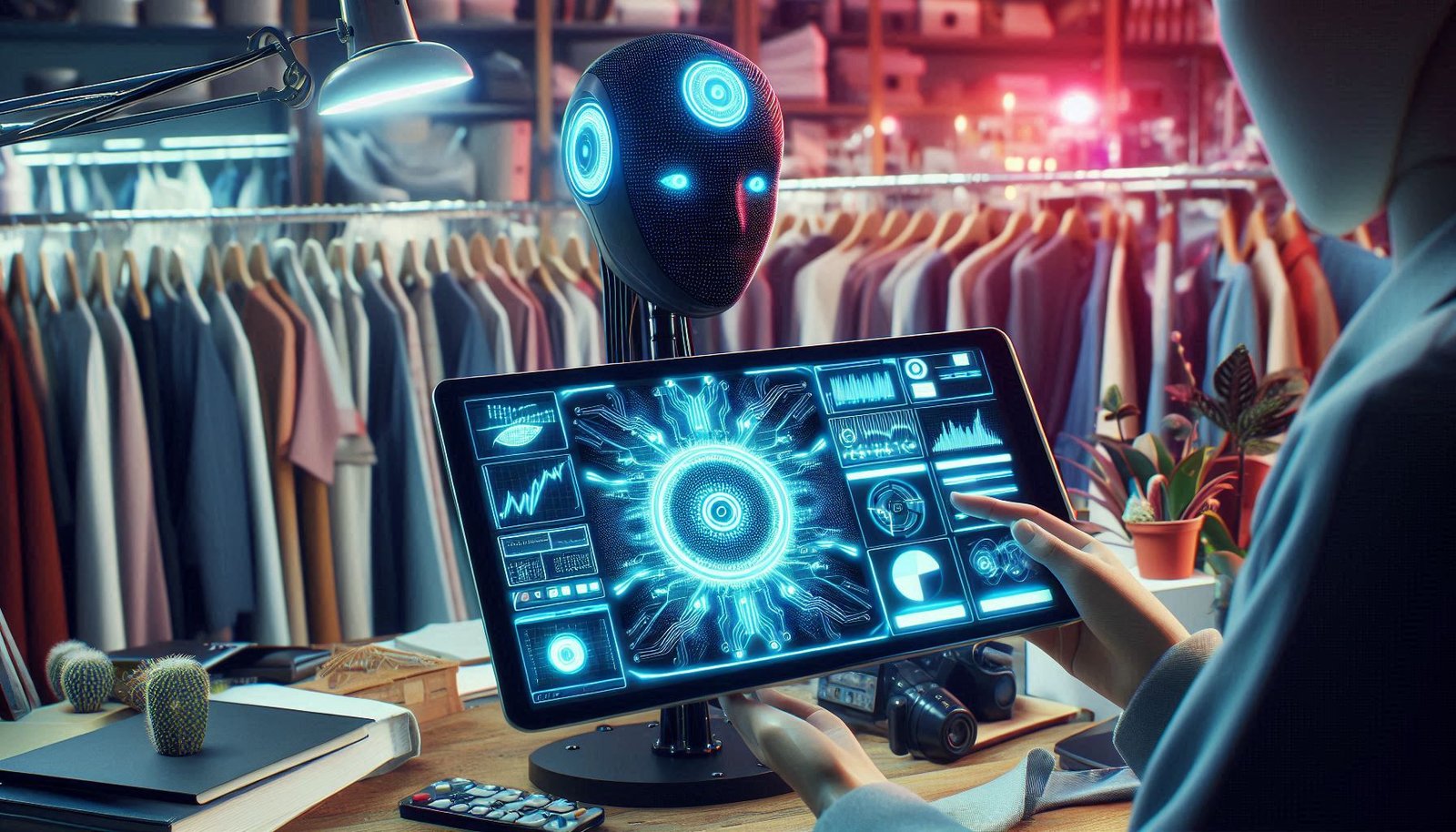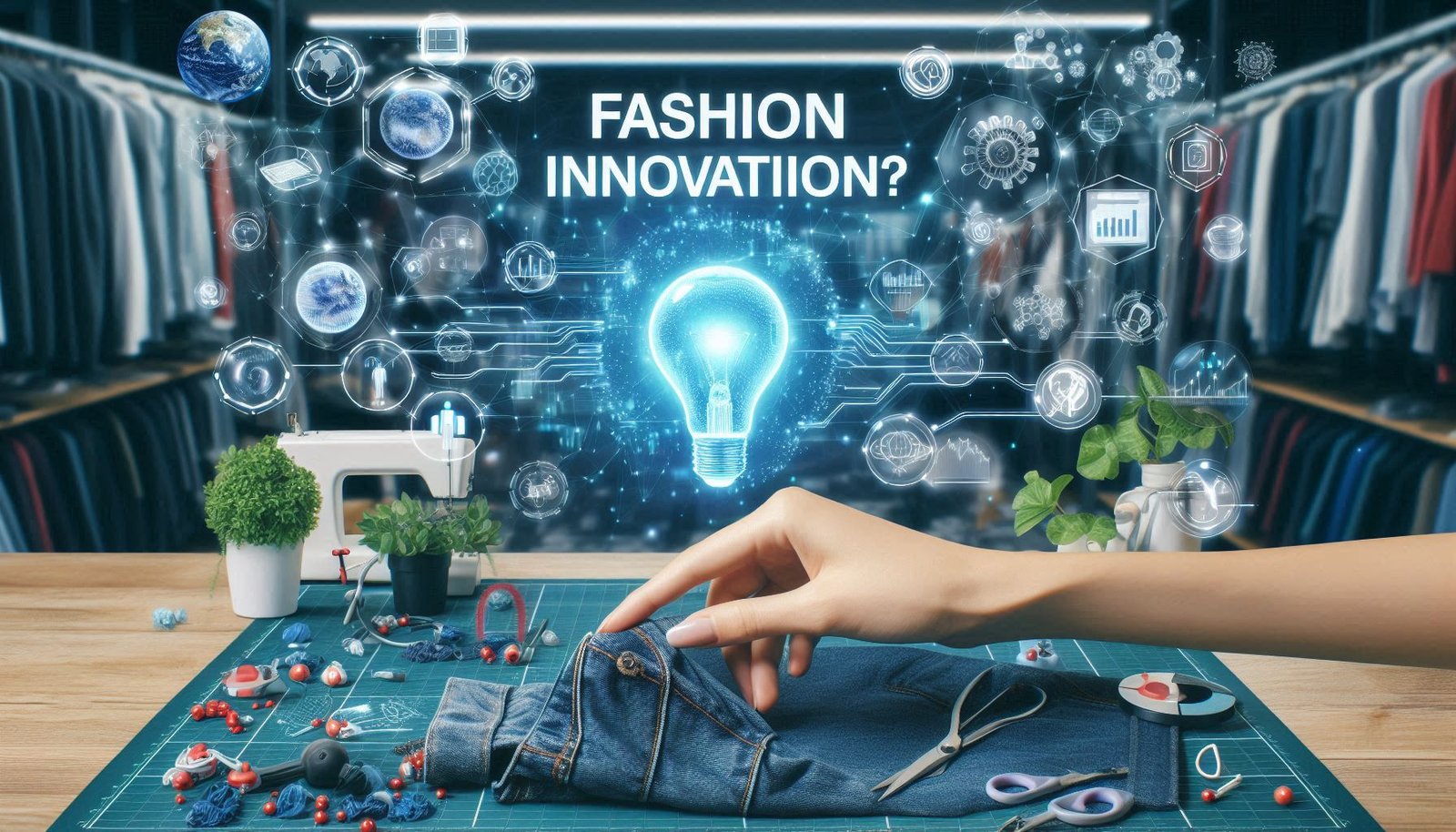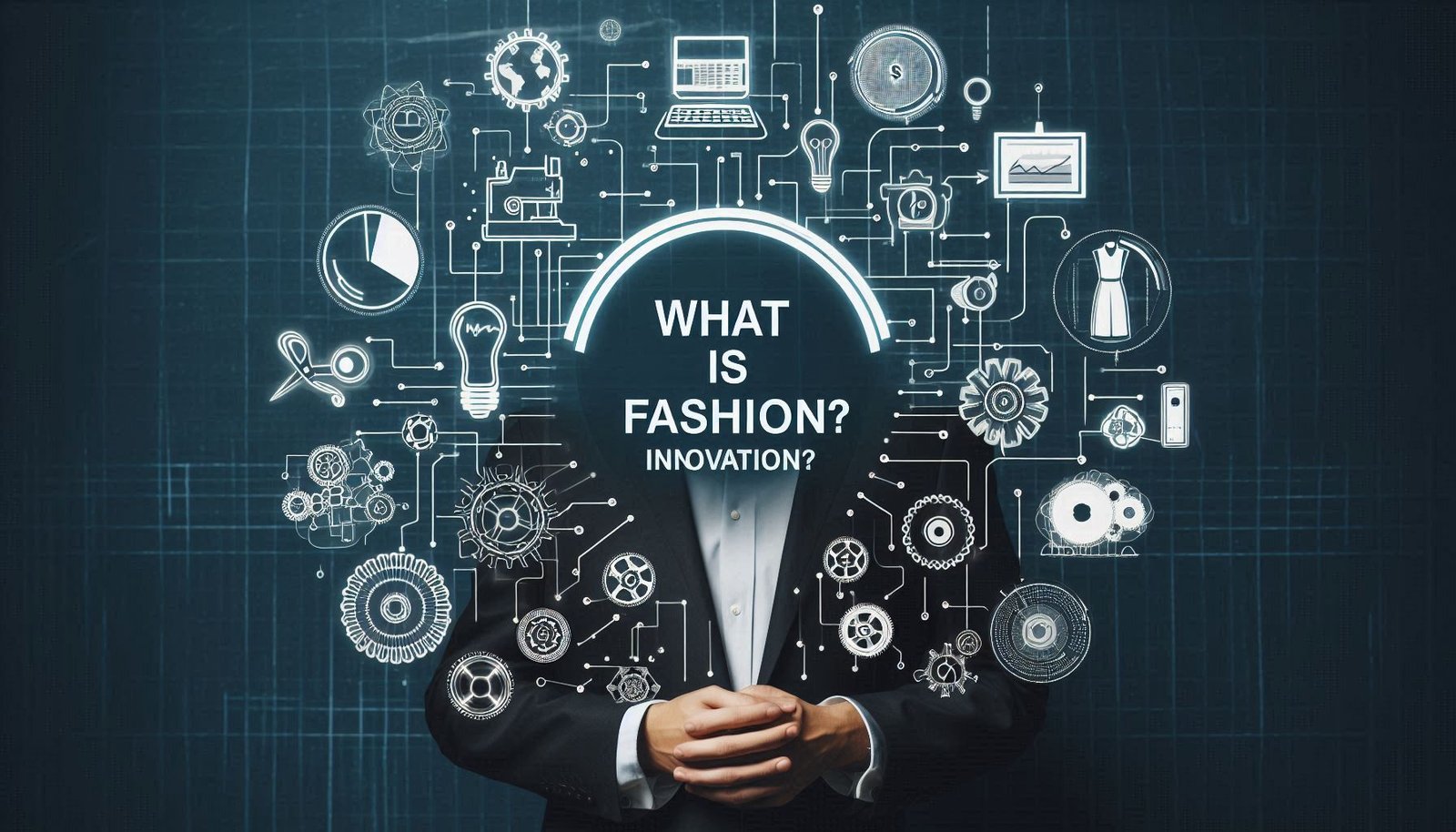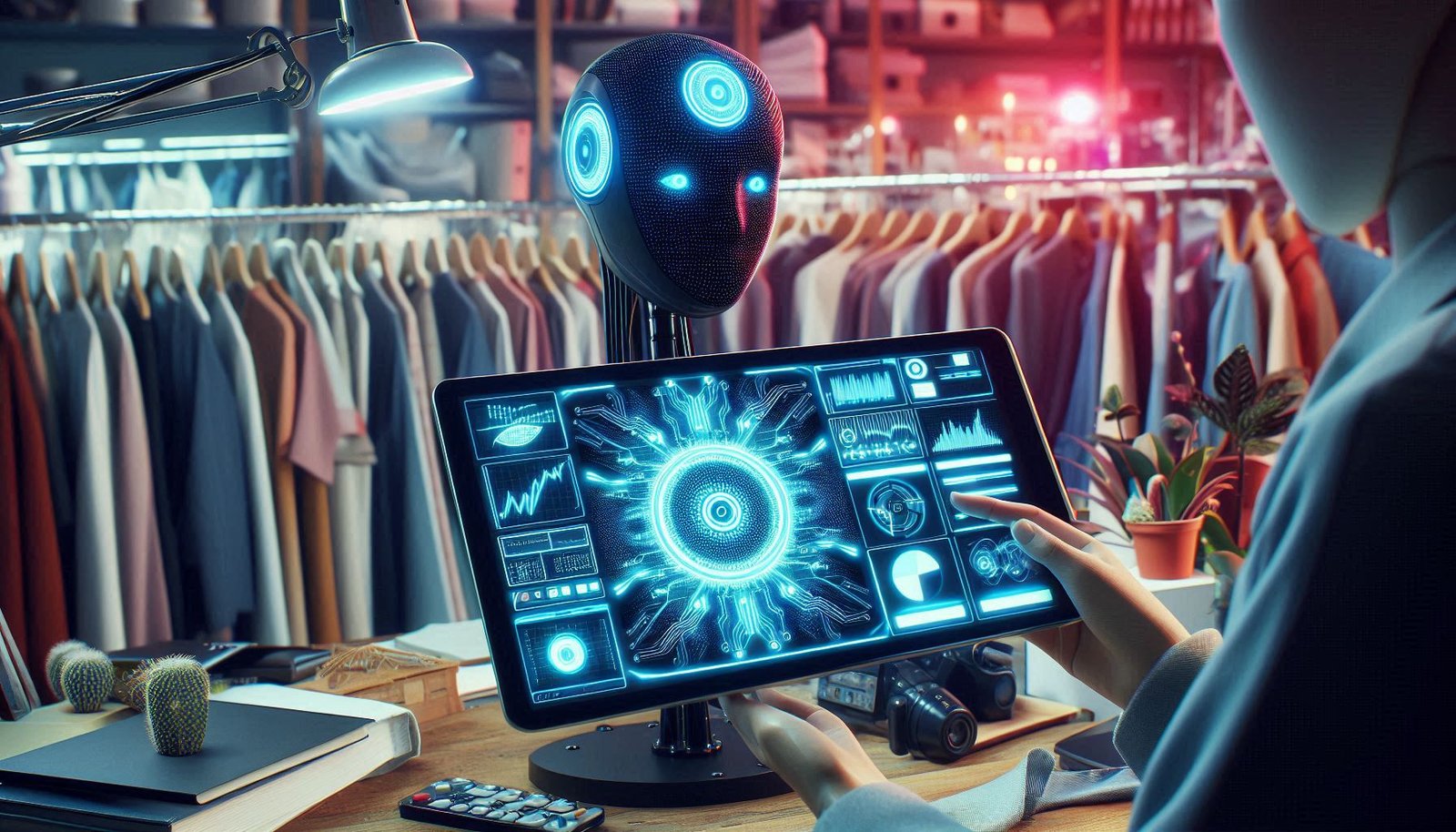The fashion industry has historically been inspired by creativity, trends, and instinct. Yet with the terms technology boom, machine learning in the fashion space is noticeably changing the way the main characters designers, retailers, consumers engage in fashion. Innovative technologies in learning are delivering the future of fashion by using data to enhance decision-making and process optimization. In this article, we will delve into the unique ways that machine learning in fashion is revolutionizing the industry and the future trends to watch out for Innovative Uses of Machine Learning in Fashion.

Table of Contents
- Introduction
- What is Machine Learning in Fashion?
- How Machine Learning is Revolutionizing Fashion
- Predicting Fashion Trends
- Enhancing Personalization and Customer Experience
- Virtual Try-Ons and Augmented Reality
- Smart Fabrics and Wearable Technology
- Automated Fashion Design
- Sustainability and Waste Reduction
- Benefits of Machine Learning in Fashion
- Challenges in Integrating Machine Learning
- FAQs
- Conclusion
1. Introduction
Machine learning (ML), a subset of artificial intelligence (AI), is revolutionizing the fashion industry. Fashion has always gravitated toward style and individuality, but today, with exciting new applications of machine learning in fashion, it also stands for data, prediction and personalization. From assisting retailers to manage their inventory, to advising design houses how to fashion the next big thing, machine learning is making the fashion industry smarter, faster and more eco-friendly for Innovative Uses of Machine Learning in Fashion.
In this article, we will explore how learning with new technologies is already making changes in all areas of the fashion industry: from design to manufacturing to retailing. We will also explore some of the exciting possibilities that ML holds for the future of innovative apparels.

2. What is Machine Learning in Fashion?
Machine learning either systems that allow learning from data, the ability to detect & discover patterns, and make predictions or decisions without being programmed explicitly. In fashion, machine learning in fashion is applied to huge quantities of data, such as customer preferences, buying patterns, fabric trends, and even social media activity to help designers and businesses make informed decisions.
Applications in fashion include:
- Trend prediction
- Inventory management
- Virtual try-ons
- Automated design suggestions
- Personalized shopping experiences
By analyzing data, machine learning in fashion makes the industry more efficient, personalized, and even sustainable. Now, let’s explore the most exciting ways machine learning fashion is changing the industry.
How does Zara use machine learning?
Zara uses machine learning to predict fashion trends, optimize inventory management, and improve supply chain efficiency. It analyzes customer data and global trends to align its product offerings with demand.
What is the innovation in fashion?
Fashion innovation is when designers are using different technologies such as machine learning, AI, and smart fabrics to innovate their designs, their factories, and their supply chain processes to create more sustainable products and processes. It seeks to provide more customized and streamlined fashion experiences.

3. How Machine Learning is Revolutionizing Fashion
Predicting Fashion Trends
Figuring out what will be fashionable next season has long been the most perilous part of fashion. For learning, with some cutting-edge technologies, the process has turned data-driven and incredibly precise.
- How it works: Machine learning fashion tools mine massive amounts of data from social media sites such as Instagram, Twitter and Pinterest, as well as search trends. They monitor fashion influencers, online chatter and buying practices to spot new trends.
- For example, ML can be used in fashion to predict a color trend by analyzing social media posts and Google search data to determine that pastels will be in style next spring.
Enhancing Personalization and Customer Experience
Consumers today look for a personalized shopping experience. Machine learning is helping to do just that by leveraging data to personalize recommendations, simplifying and enhancing our online shopping experiences.
- How it works: Algorithms use machine learning to track a shopper’s actions — what they search for, buy or browse — and suggest similar apparel. The system collects massive amounts of data over time, which makes its recommendations increasingly personalized.
- For instance, if you’ve purchased a few pairs of boots online, an ML algorithm could recommend trendy scarves or jackets
Virtual Try-Ons and Augmented Reality
A big drawback of online shopping is that customers can’t try on clothing before buying. Machine learning AI and augmented reality (AR) power virtual try-ons and are providing customers with a solution for this problem by enabling them to preview how clothes will look on their bodies even before physically trying them.
- How it works: Algorithms written for machine learning identify a customer’s body type and fit clothes in a virtual environment using data from 3-D models, body scans or even live video feeds.
- For instance, Zara and ASOS are leveraging AR technology to enable customers to see clothing on their bodies in real time, leading to smarter purchasing decisions.
Smart Fabrics and Wearable Technology
Bringing Fashion and Technology Together with Smart Fabrics and Wearables. In fashion, machine learning is contributing to the development of fabrics that can respond to temperature, track heart rates and, even, charge devices while you wear them.
- How it works: Wearable devices gather data through sensors embedded in fabrics. A machine learning model is then trained to process this data to modify features such as fabric temperature, moisture content or color shift.
- For instance smart jackets, which helps regulate your body temperature according to your surrounding or fitness wearables, which helps you keep track of your vital signs in real-time.
Automated Fashion Design
Fashion design is an art, but machine learning fashion is streamlining it to be faster and more data-driven. Sawant has been exclusively working in fashion (now at an eco-friendly startup in Bangalore) and thinks there’s a market gap for designers looking to understand what products or colors or fabrics are most likely to hit the shelves, through consumer data analytics and relevant trending history.
- How it works: Designers enter data on style preferences, fabric types, color trends and so on into the ML models, which in turn recommend design ideas or combinations that are expected to be bestsellers.
- For instance, while some companies, such as Stitch Fix, use algorithms to crawl their customer feedback data and come up with design recommendations, others use AI to run automated elements of the pattern-making process.”
Sustainability and Waste Reduction
Fashion is an industry notorious for its environmental footprint, but machine learning fashion is helping cut back on waste, making fashion sustainable. Machine learning (ML) models are used to better anticipate demand, decreasing the amount of excess goods produced and minimizing the number of unsold items.
- How it works: These machine-learning fashion models study purchasing patterns, tastes, and other data — including weather forecasts — to figure out what will be hot. From there, brands can create only what’s necessary, cutting waste and limiting energy use.
- Example: Examples of brands utilizing ML include H&M and Zara to ensure they’re not overproducing their product, which contributes to more items in landfills.
4. Benefits of Machine Learning in Fashion(Innovative Uses of Machine Learning in Fashion)
Machine learning fashion offers several key advantages to the fashion industry:
- Improved Efficiency: The fashion world benefits from machine learning by automating several processes such as trend forecasting and inventory control, enabling companies to reduce time and cost.
- Shoppers get more personalized experiences that increase customer satisfaction and loyalty.
- Less Waste: Machine learning fashion can also base predictions to align production with demand more precisely, helping reduce waste and environmental damage.
- Quicker design can means designers can trial suggestions at speed and move with patterns without beginning from scratch
- Make it Smarter – For Retailers, stock levels can be optimized and ensure the right products are
5. Challenges in Integrating Machine Learning
While the benefits of machine learning in fashion are clear, there are some challenges in adopting this technology:
- Data privacy concerns: Increased data collection means greater need for stringent privacy protections. Brands need to make sure that they are transparent about how they are collecting and using consumer data.
- Expensive: New technologies in learning development implementation can cause a big investment for technology and qualified staff, which may be a hindrance for small enterprises.
- Data Quality: Machine learning fashion is only as good as the data it’s trained on. Degraded or insufficient data can result in the wrong forecasting and consequences.
6. FAQs
Q1: How does machine learning help reduce waste in fashion?
A1: Machine learning in fashion helps brands predict demand more accurately, so they only produce what’s likely to sell. This reduces the chances of overproduction and minimizes waste.
Q2: Can machine learning predict fashion trends better than human designers?
A2: Nonetheless machine learning fashion still leaves a lot of room for the expertise of the human designer who can interpret the learned knowledge in unique and aesthetic ways.
Q3: Will virtual try-ons completely replace in-store shopping?
A3: New uses of machine learning in fashion like virtual try-ons help alleviate some of the drawbacks that shopping in a store will always have over shopping online, but they don’t seem likely to undo that gap entirely. They do reduce the need for physical try-ons and returns, however.
Q4: What is machine learning in retail?
A4: In retail, for example, machine learning powered algorithms analyze customer behavior, predict trends, and optimize stock levels. This allows retailers to deliver tailor-made shopping experiences and optimize operations.
Q5: What is the application of ML in the retail sector?
A5: It improves the customer experience and helps optimize business processes.
Q6: Where is ML used today?
A6: Today machine learning is involved in a range of different industries— e-commerce, healthcare, finance, automotive, and entertainment, just to name a few! It’s aiding businesses in enhancing customer experiences, streamlining processes
7. Conclusion
The use of machine learning in fashion is revolutionizing the future of fashion. The potential applications are numerous, from predicting trends and improving customer experiences to creating more sustainable fashion. With technology continually evolving, here are a few more’s through which future machine learning Fashion will transform the industry.
The union between fashion and technology is only going to strengthen over the coming years, and cutting-edge learning techniques are going to prove pivotal in making this market more intelligent, productive.

[…] is critical to successful business operation. However, in the digital age businesses are making use of machine learning (ML) technologies to take their Master Data Management (MDM) to the next level. Machine learning is […]
[…] ML is still one of the most interesting and dynamic fields in the technology landscape. As we all know businesses are adopting ai solutions so the requirement of machine learning professionals is predicted to easily reach the sky by 2025. It can be very easy to get overwhelmed by the number of courses out there when you want to learn machine learning. So, how do you choose the right machine learning course for your needs and experience level? We list the key things to look out for in this guide(What is the Best Machine Learning Course in 2025) […]
[…] Read more: Innovative Uses of Machine Learning in Fashion […]